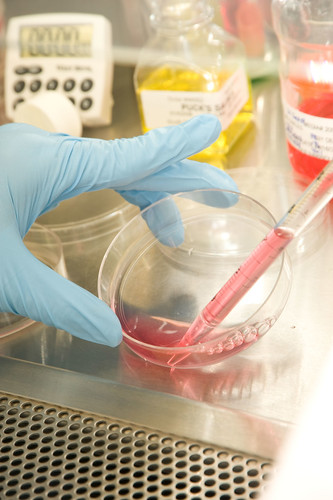
Today kicked off “Get Smart about Antibiotics” week in the United States and the World Health Organization’s World Antibiotic Awareness Week in 2016. During this week, the U.S. Department of Agriculture (USDA) and its other federal partners want to remind families and communities about the importance of responsible antibiotic use in both humans and animals, to help reduce the development of resistant bacteria. This week, we also celebrate the 20th anniversary of the National Antimicrobial Resistance Monitoring System (NARMS). Through NARMS, USDA, the U.S. Food and Drug Administration (FDA) and the Centers for Disease Control and Prevention (CDC) collaborate on everything relating to antimicrobial resistant bacteria. Since 1996, USDA’s Agricultural Research Service (ARS) and the Food Safety and Inspection Service (FSIS) have been active participants in this combined federal surveillance program.
So, what is antimicrobial resistance? As you might recall, in 1928, Dr. Alexander Fleming discovered penicillin, a drug that revolutionized the treatment of bacterial infections. In the years following, penicillin and the discovery and therapeutic use of other antibiotics, we have relied on antibiotics to treat and cure a variety of illnesses - in both humans and animals, across the globe. The use of these drugs has aided in the development of resistant strains of bacteria. Unfortunately, this development means that some previously treatable forms of bacterial infections are now resistant to the antibiotics that were designed to treat them. It is estimated that the decrease in effectiveness of antibiotics, results in more than two million U.S. cases of antibiotic resistant infections, annually. Some of these types of infections might require longer hospital stays and are more costly to treat successfully.
As scientists, we call this problem antimicrobial resistance (AMR). Dr. Fleming even raised this concern in 1945 after receiving the Nobel Prize in Physiology or Medicine for his discovery of penicillin. The AMR threat in humans and animals is becoming an increasing problem and requires the adoption of a One Health approach. This approach is founded on principles that recognize that the health of people and populations are linked to the health of animals and environments. For example, antibiotics are used in food-producing animals to prevent illness, limit the spread of infections in a herd or flock, and treat diseases. Because antibiotics are administered to animals, food products derived from them can serve as a vehicle for the movement of resistant bacteria to humans, just as antibiotics administered to people can affect the environment, including the environment of animals. The One Health approach brings together the expertise of physicians, veterinarians, environmental scientists, and other public health professionals so that problems can be identified and actionable solutions are developed that can minimize the emergence and spread of AMR.

USDA is uniquely positioned to contribute to the body of knowledge about resistant bacteria through the collaboration and ongoing work of experts both within and outside of the Department. For the last 20 years, ARS and FSIS have partnered alongside FDA and CDC to collect and define AMR bacteria in meat and poultry products. Through the NARMS program, ARS and FSIS continually monitor changes in AMR bacteria from animal meat through the FSIS regulatory testing program and from animals through the new cecal sampling surveillance program. The sampling results from these two programs help to identify new or changing resistant bacterial patterns and show comparisons between bacteria found in animals used for food and bacteria important in human medicine. This information is critically essential for scientists to understand how resistant bacteria emerge and spread.
In 2016, USDA in collaboration with its public health partners began using whole genome sequencing (WGS) to further characterize AMR bacteria in real-time. WGS is a process that can determine the DNA sequence of bacteria collected from food animal samples. This method allows scientists to understand similarities and differences between bacteria with greater detail than ever before. The information gained from WGS helps USDA and NARMS monitor AMR bacteria with more accuracy and to identify more specifically the types of bacteria that cause foodborne illness.
Despite USDA’s long history of significant activities and investments in AMR, including its strong twenty years of NARMS collaboration as well as USDAs’ own AMR Action Plan (PDF, 322 KB); a considerable amount of work remains to be done to address knowledge gaps in AMR and for further strengthen the current programs. To achieve the greatest public health impact, USDA must continue to coordinate and leverage expertise across many areas. And to ensure that effectiveness of antibiotics is preserved for treating both people and animals and that it is extended to future generations, USDA, other federal agencies, industry, and academic partners are working together to better understand the role of animal production environments in the development and spread of AMR bacteria. More information about USDA’s AMR work is found at http://www.usda.gov/antimicrobial.html.
